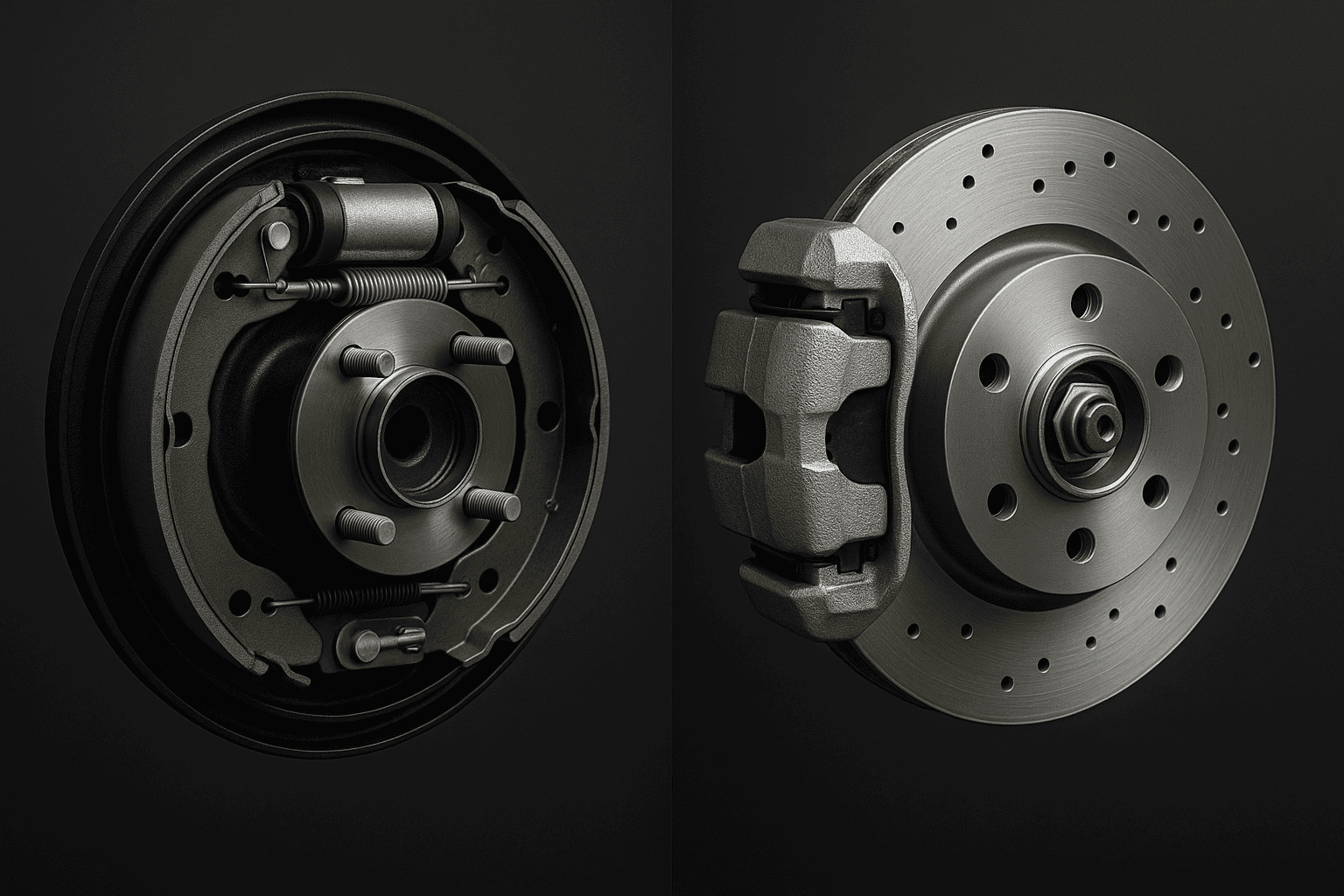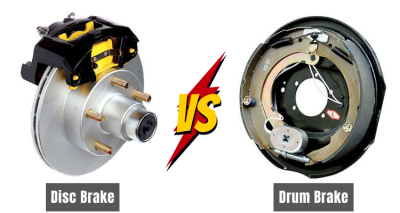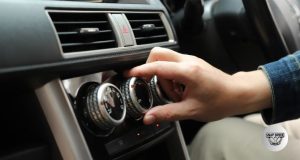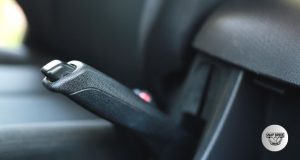Last Updated on October 16, 2025 by Aaron Blake
Are you curious about how your vehicle’s brakes actually work? Understanding the difference between disc and drum brakes can make a big difference when it comes to your safety and maintenance costs.
Whether you’re choosing a new car or just want to know why your brakes feel a certain way, knowing how these two types work will give you a clear edge. Keep reading, because by the end of this article, you’ll easily spot which brake system suits your needs and why it matters for your driving experience.

Credit: www.autodoc.co.uk
Contents
Disc Brake Basics
Disc brakes are a common type of brake system in many vehicles. They help slow down or stop the car by using friction.
These brakes use a metal disc that spins with the wheel. When you press the brake pedal, the disc slows down.
How Disc Brakes Work
Disc brakes work by pressing brake pads against a spinning disc. This creates friction that slows the wheel.
A caliper holds the brake pads. When you brake, the caliper squeezes the pads onto the disc.
- The disc spins with the wheel
- Brake pads press on the disc
- Friction slows or stops the wheel
- Heat from friction is released quickly
Common Uses
Disc brakes are common in cars, motorcycles, and bicycles. They work well for fast stopping.
They handle heat better than drum brakes. This makes them good for heavy use or high speeds.
- Passenger cars use disc brakes on front wheels
- Sports cars often have disc brakes on all wheels
- Motorcycles rely on disc brakes for control
- Bicycles use disc brakes for better stopping power

Credit: deshibiker.com
Drum Brake Essentials
Drum brakes are a common type of brake system used in vehicles. They help stop the car by pressing brake shoes against a spinning drum.
This system is simple, reliable, and works well in many driving situations. Understanding how drum brakes work can help you see their role in vehicle safety.
How Drum Brakes Work
Drum brakes use a round drum attached to the wheel. Inside the drum, brake shoes press outwards to slow the wheel down.
When you press the brake pedal, hydraulic pressure pushes the shoes against the drum. This creates friction that stops the wheel from spinning.
- Brake shoes are curved pieces with friction material
- The drum rotates with the wheel
- Hydraulic fluid moves the shoes outward
- Friction slows the wheel and stops the vehicle
Typical Applications
Drum brakes are often found on the rear wheels of many cars. They work well for parking brakes and lighter braking needs.
They are also common in trucks and older vehicles because they are cost-effective and easy to maintain.
- Rear brakes on passenger cars
- Parking brakes for many vehicles
- Light trucks and commercial vehicles
- Older model cars and motorcycles
Performance Comparison
Disc and drum brakes are two common types of vehicle brakes. Both help stop cars but work differently. Understanding their performance helps choose the right brake type.
This comparison looks at stopping power, heat dissipation, and maintenance needs of disc and drum brakes.
Stopping Power
Disc brakes offer strong and consistent stopping power. They press brake pads against a spinning disc to slow the wheel.
Drum brakes use shoes pressing inside a drum. Their stopping power is good but can fade faster under heavy use.
- Disc brakes stop quickly and evenly
- Drum brakes work well but may weaken with heat
- Disc brakes give better control in emergencies
Heat Dissipation
Disc brakes cool down faster because their discs are open to air. This reduces brake fade on long drives.
Drum brakes trap heat inside the drum. This can cause overheating and less efficient braking after many stops.
- Disc brakes lose heat quickly
- Drum brakes hold heat longer
- Disc brakes perform better on steep roads
Maintenance Needs
Disc brakes are easier to inspect and replace. Their parts are simpler to access and clean.
Drum brakes need more work to service. Removing the drum is required to reach the brake shoes inside.
- Disc brakes need less frequent repairs
- Drum brakes require more maintenance effort
- Disc brakes show wear clearly on pads
Choosing Between Disc And Drum
Disc brakes and drum brakes both stop a vehicle by creating friction. Picking the right one depends on several factors. These factors affect cost, durability, and vehicle fit.
Understanding these points will help you choose the best brake type for your needs.
Cost Factors
Drum brakes usually cost less to make and fix. This makes them common in budget cars. Disc brakes cost more but offer better performance.
Repair costs can also differ. Drum brakes have simple parts, so repairs can be cheaper. Disc brakes need more parts and skill to fix.
- Drum brakes: lower initial cost, cheaper repairs
- Disc brakes: higher cost, better stopping power
Durability
Disc brakes work well in wet and dry conditions. They cool down faster and resist wear. This helps them last longer in tough use.
Drum brakes wear more quickly under heavy use. They can overheat and lose stopping power. Drum brakes suit lighter driving and less harsh conditions.
- Disc brakes: better heat resistance, longer life
- Drum brakes: less heat resistance, more wear
Vehicle Compatibility
Many modern cars use disc brakes on front wheels. Some use disc brakes on all wheels. Drum brakes still fit many older or small vehicles.
Heavy trucks often use drum brakes because they handle heavy loads well. Small cars and motorcycles usually have disc brakes for better control.
- Disc brakes: common on modern cars and motorcycles
- Drum brakes: used on older cars and heavy trucks

Credit: www.cjponyparts.com
Frequently Asked Questions
What Is The Main Difference Between Disc And Drum Brakes?
Disc brakes use a rotor and caliper; drum brakes use a drum and shoes.
Which Brake Type Performs Better In Wet Conditions?
Disc brakes perform better in wet conditions due to faster water removal.
Are Disc Brakes Easier To Maintain Than Drum Brakes?
Disc brakes are usually easier to inspect and maintain than drum brakes.
Why Are Drum Brakes Still Used In Some Vehicles?
Drum brakes cost less and work well for rear wheels in many cars.
How Do Disc And Drum Brakes Differ In Heat Management?
Disc brakes cool faster, reducing brake fade compared to drum brakes.
Conclusion
Disc brakes cool down faster and stop vehicles more quickly. Drum brakes last longer and cost less to make. Each type suits different driving needs and budgets. Choosing the right brake depends on your vehicle and use. Knowing their differences helps keep you safe on roads.
Remember, regular brake checks improve car safety and performance. Simple care can prevent big problems later. Stay informed and drive with confidence every day.





